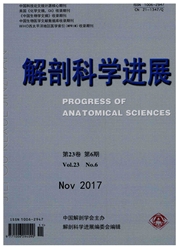

 中文摘要:
中文摘要:
创伤后应激障碍(PTSD)是指由于异常威胁性或灾难性心理创伤导致延迟出现和长期持续的精神障碍。杏仁核是大脑中的"恐惧中枢",与创伤性记忆和应激时HPA轴的激活联系密切。PTSD患者有强烈的恐惧和惊吓反应,血中糖皮质激素浓度反常低下,下丘脑-垂体-肾上腺轴(HPA)轴调节紊乱。杏仁核可通过糖皮质激素受体(GR)和盐皮质激素受体(MR)调节激活HPA轴,增加糖皮质激素的释放。PTSD导致杏仁核神经元细胞凋亡,凋亡相关基因Bax和Bcl-2比值增大时,神经细胞出现凋亡。PTSD引发杏仁核神经元长时程增强(LTP),杏仁核是恐惧形成和表达的关键中枢。在恐惧条件反射的形成过程中,杏仁核发生LTP,表明LTP是反应PTSD发生机制的重要指标。PTSD引致乙酰胆碱酯酶(AChE)活性降低,乙酰胆碱增多,恐惧增强;PTSD导致杏仁核神经元MR、GR及MR/GR发生改变,激活HPA轴,导致HPA轴调节紊乱。
 英文摘要:
英文摘要:
Post-traumatic stress disorder (PTSD) is an anxiety disorder that can develop after exposure to one or more traumatic events threatened or caused grave physical harm. Amygdala nueleus is the brain's "fear center" and links closely with the traumatic memories and activation of hypothalamic-pituitary-adrenal(HPA) axis under stress. PTSD patients have a strong sense of fear and startle response, abnormal low blood glueoeorticoid concentration, disordered HPA axis. Amygdala regulates the HPA axis through the activation of glucocorticoid receptor(GR) and mineralocorticoid receptor(MR), and increases the release of glucoeorticoid. PTSD induces the apoptosis of amygdala neurons regulated by apoptotic related genes Bax and Bel-2 with the increase of BaydBc-2 ratio. PTSD induces long-term potentiation (LTP) in arnygdala neurons which are the key hub of the conformation and express of fear, LTP is a neurophysiological basis of learning and memory. In the conformation of conditioned fear, the occurrence of LTP indicates that LTP is an important indicator of the mechanism of PTSD. PTSD causes the decrease of activity of acetylcholinesterase (ACHE), the increase of aeetyleholine, enhancement of fear. PTSD changes the expression of MR, GR and MR/GR in amygdala neurons, activates HPA axis, resuhes in the disturbance of HPA axis. The amygdala is closely linked with PTSD and may play an important role in the pathogenesis of PTSD.
 同期刊论文项目
同期刊论文项目
 同项目期刊论文
同项目期刊论文
 Single-prolonged stress induces apoptosis in the amygdala in a rat model of post-traumatic stress di
Single-prolonged stress induces apoptosis in the amygdala in a rat model of post-traumatic stress di Activitity of the 5-HT 1A receptor is involved in the alteration of glucocorticoid receptor in hippo
Activitity of the 5-HT 1A receptor is involved in the alteration of glucocorticoid receptor in hippo Increased phosphorylation of extracellular signal-regulated kinase in the medial prefrontal cortex o
Increased phosphorylation of extracellular signal-regulated kinase in the medial prefrontal cortex o Changes of Bax, Bcl- 2 and apoptosis in hippocampus in the rat model of post-traumatic stress disord
Changes of Bax, Bcl- 2 and apoptosis in hippocampus in the rat model of post-traumatic stress disord 期刊信息
期刊信息
